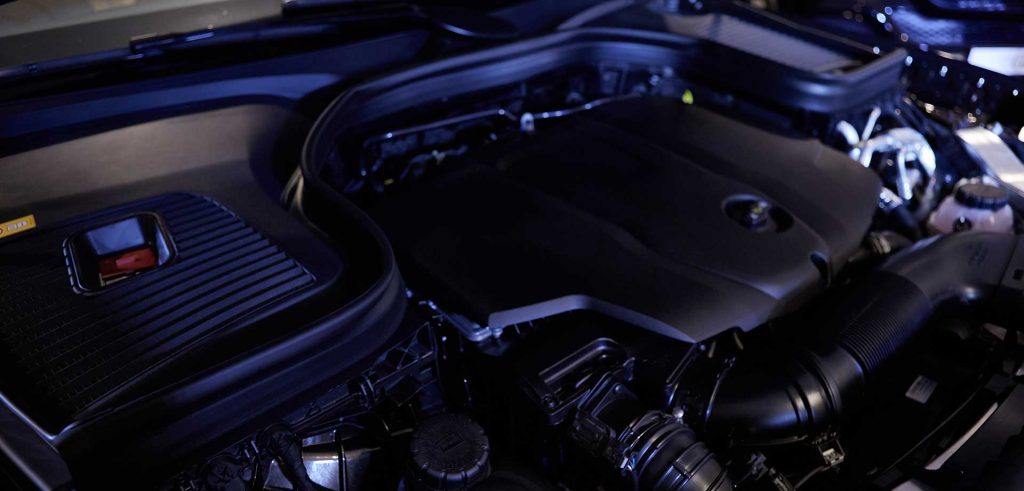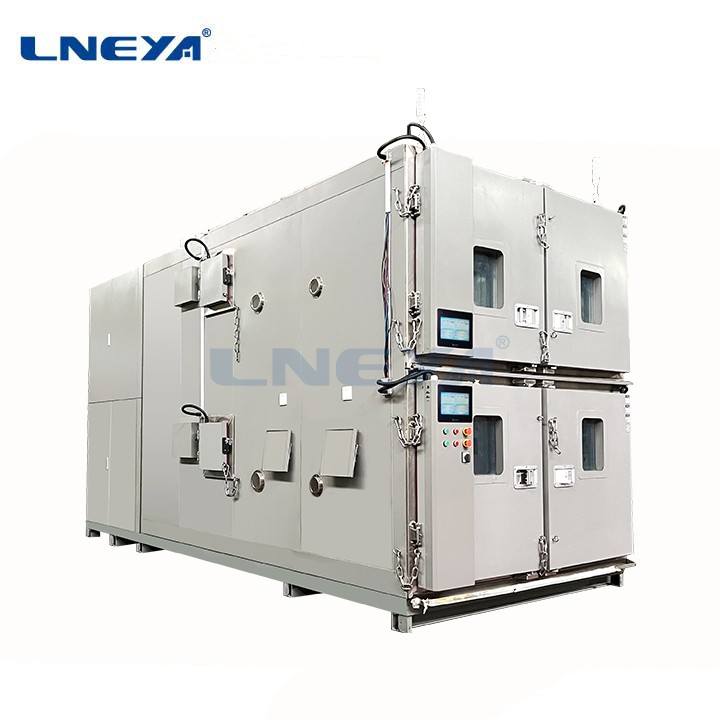EV Battery Thermal Testing: What It Is and Why It Matters
Battery thermal testing uses environmental test chambers to simulate different temperatures, helping engineers evaluate the safety, stability, and lifespan of battery cells, modules, and packs under various thermal conditions. Battery performance affects the safety and endurance of electric vehicles, so battery thermal testing is a necessary step in the R&D and certification stages.Why do we need to do battery thermal testing? What items does battery thermal testing include? What equipment is used?Keep reading!

Why do we need to do EV battery thermal testing?
There are several reasons for thermal testing EV batteries:
The hazards of battery thermal runaway
You may have heard about the news of electric vehicles catching fire. Are you curious about why the battery suddenly caught fire or even exploded? This is because of thermal runaway. The heating rate inside the battery is higher than the heat dissipation rate, and the temperature continues to rise, which will eventually lead to thermal runaway. How does thermal runaway occur? What dangers does it bring?
Batteries generate heat during normal use, but this heat is controllable. Just like your mobile phone will heat up slightly when it is in use, but the heat will gradually dissipate when it is on standby. When the battery is overcharged, over-discharged, mechanically damaged, or in a high-temperature environment for a long time, its heat will accumulate rapidly over a period of time and be difficult to dissipate.
When the temperature inside the battery is too high, a chemical reaction will occur. The high temperature will cause the electrolyte to decompose, the positive electrode material will begin to release oxygen, and then the diaphragm will melt and the internal circuits will short-circuit. When the combustible gas continues to accumulate, the battery shell will expand. Eventually, it will evolve into spontaneous combustion or even an explosion. Worse, thermal runaway will spread from one battery cell to the entire module or battery pack. Most of the time, the whole vehicle burns from a small battery cell.
However, thermal runaway can be prevented through testing. In the R&D stage, a freezer can be used to simulate the application environment of EV batteries and analyze their thermal stability limits. Thermal runaway can also be induced in experiments to evaluate the speed of thermal runaway spread and the safety protection effect. All of these help optimize the battery system, eliminate safety hazards, and improve the safety of electric vehicles.
Battery performance at different temperatures
EV batteries perform differently at different temperatures.
High temperature (> 45℃)
In summer, the internal temperature of an electric vehicle parked outdoors can reach 60℃~70℃. What effects does this have on the battery? At high temperatures, the internal resistance of the battery will decrease, but the battery electrolyte will evaporate and decompose, and the internal air pressure will increase. This will accelerate capacity degradation and shorten service life.
As heat accumulates, the risk of thermal runaway also increases. The most obvious feature is battery bulging. The probability of battery fire and explosion increases after bulging. Therefore, thermal testing must cover high-temperature simulation.
Low temperature (< 0℃)
When the temperature in winter is below -20℃, you will find that electric vehicles are difficult to start, the range is shortened, the power is weakened, and the charging time is longer. At low temperatures, the internal resistance of the battery will increase, the flow rate of lithium ions will decrease, and they cannot be normally embedded in the negative electrode, so the output power will decrease, the discharge capacity will be weakened, and the vehicle acceleration will be slow. In severe cases, lithium dendrites will grow, which will cause battery short circuits. Therefore, thermal testing simulates the battery experience in extremely cold areas.
Drastic temperature changes (-20℃~+60℃)
Dramatic temperature changes are often encountered in the use of electric vehicles. In areas with large temperature differences between day and night, vehicles will frequently experience temperature changes from high temperature during the day to low temperature at night. In winter, cars driving out of underground garages will be exposed to cold air instantly. We usually call this drastic temperature change in a short period of time a thermal shock.
Drastic temperature changes will cause inconsistent thermal expansion and contraction of the battery cell, exacerbating material aging and deformation. After the sealing structure ages, the airtightness of the battery will decrease, increasing the risk of water ingress. It is difficult to see its performance changes from the surface, but its service life will be shortened. In order to make the battery work normally in a rapid temperature change environment, thermal cycle tests, and thermal shock tests will be performed during thermal testing.
Battery performance at different temperatures
If the performance and safety of the battery are not up to standard, electric vehicles cannot pass national or international certification tests. In other words, the car can’t get road approval or be sold internationally. The thermal test cycle is long, and car manufacturers usually have to conduct it several months in advance. If the battery test data does not meet the standards, it will cause delays in approval.
Battery thermal test items
Battery thermal test items include the following 5 core tests:
High-temperature and low-temperature tests
The purpose of high-temperature and low-temperature tests is to simulate the performance of batteries when working in extreme climates and evaluate their capacity, internal resistance, charge and discharge efficiency, and safety risk changes.
Thermal cycle test
The thermal cycle test is to observe the structural stability, air tightness, and life attenuation of the battery under repeated hot and cold changes, especially to test whether the material will be damaged by thermal expansion and contraction. The main test content is to cycle the battery cell, module, or battery pack repeatedly within the specified temperature range several times, detect the sealing of the battery shell, leakage at battery terminals or connectors, etc., and understand its performance degradation trend.
Thermal shock test
The thermal shock test can help evaluate the physical structure and electrical performance stability of the battery system when it encounters a sudden temperature change in a short period of time. The thermal transition time is generally within 10 seconds, and the number of cycles varies according to the standard. Generally, it will detect whether there are casing cracks or enclosure damage, material shedding, internal short circuits, performance degradation, etc.
Thermal runaway induction test
The thermal runaway induction test simulates the process of thermal runaway of the battery under extreme conditions. Artificially heat a single battery cell to the thermal runaway point, and observe its trigger point, temperature change, gas generation, spread path, and spread suppression ability.
Temperature uniformity and thermal management verification
Temperature uniformity and thermal management verification are to ensure that the temperature distribution of each part of the battery pack is uniform during operation, the heat dissipation design is reasonable, and the BMS control logic is effective to avoid local overheating or overcooling. Usually, the test module temperature difference, battery preheating function, cooling system response speed, heating rate under low-temperature start-up, etc. are tested.
Battery thermal test equipment requirements
Wide temperature range
The actual working conditions of the battery will experience changes from extreme cold to high temperature. If you don’t want to change equipment frequently during thermal testing, it is recommended that you choose a chiller with a wider operating temperature range.
Uniformity
Uneven temperature distribution in the test area will cause errors in the test data. Precision chillers generally use multi-point temperature control and laminar air supply structures to ensure temperature uniformity.
A prova di esplosione
Battery thermal testing has high safety risks. Therefore, the chiller should have safety designs such as pressure relief devices, explosion-proof windows, fireproof inner boxes, and inert gas ventilation systems.
Data recording
It is necessary to record various data during the thermal test. A chiller that can automatically record and export real-time temperature, voltage, temperature curves, and other data can bring convenience to your test.
Safety devices
To prevent system failures and emergencies, battery test chillers need to be equipped with a variety of safety devices. Including high-temperature protection, low-temperature protection, high-voltage protection, etc.
How LNEYA supports battery thermal testing
A reliable thermal test chamber can provide safe and stable test conditions for battery thermal testing. If you are looking for a battery testing solution, you can talk to our freezer experts about your application requirements. LNEYA helps you determine the best test solution for you based on battery type, temperature zone, accuracy, capacity, safety standards, budget, and other details that need to be considered.
Related chillers
CONTATTO
TEL:
EMAIL:
WeChat & WhatsApp:

Wechat QR

Hai domande o hai bisogno di un preventivo? Compila il modulo sottostante e il nostro team ti risponderà entro 24 ore.
 Refrigeratori industriali LNEYA Produttore Fornitore
Refrigeratori industriali LNEYA Produttore Fornitore














